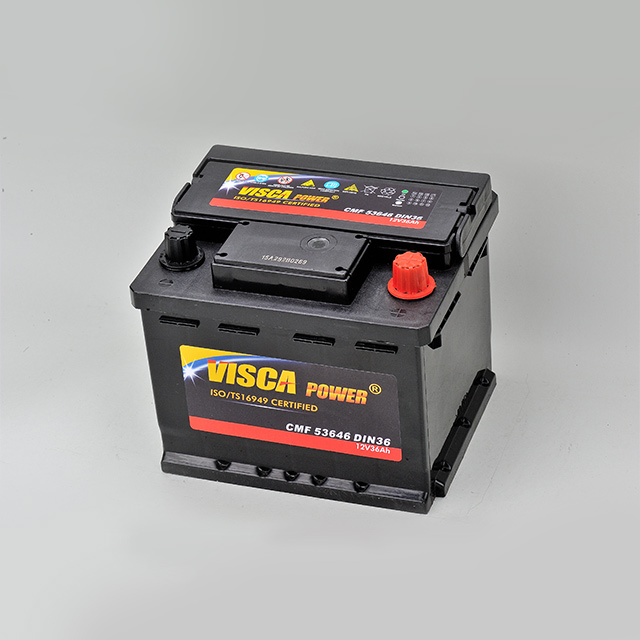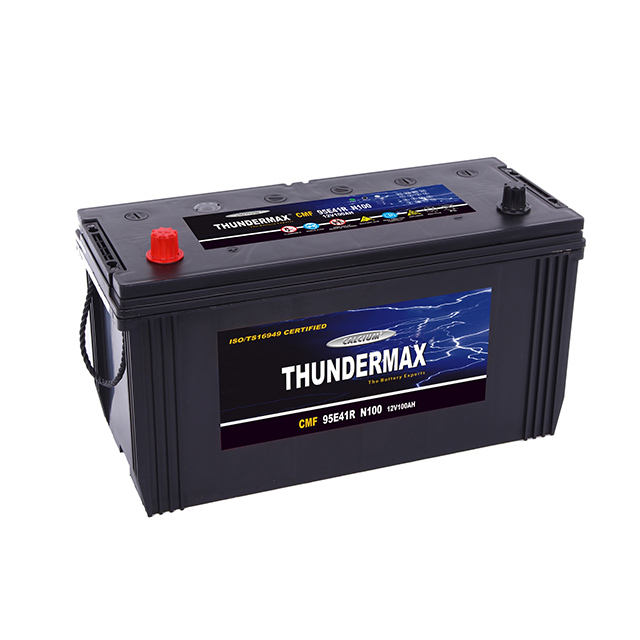Lead Acid Battery Vs Lithium Battery: Which One Should You Choose?
Views: 0 Author: Site Editor Publish Time: 2025-06-16 Origin: Site
In the automotive world, batteries do more than simply start engines—they are vital to every electrical system's performance, from safety-critical control units to infotainment and telematics. However, the real-world conditions encountered by vehicles can be unforgiving: frigid winter mornings, scorching desert heat, and intensive stop-and-go city driving all place immense stress on battery systems. Selecting the right chemistry—lead acid or lithium—requires an understanding of how each technology behaves under these demanding scenarios.
While lithium-ion batteries have advanced rapidly in recent years, lead acid batteries remain the predominant choice for Starting, Lighting, and Ignition (SLI) applications in internal combustion engine (ICE) vehicles.
Cold Weather Starting — CCA Ratings and Startup Behavior
One of the greatest challenges for any automotive battery is delivering sufficient current to crank an engine in sub-zero temperatures. Cold cranking amps (CCA) measure the battery’s ability to provide high burst current at 0°C (32°F) for 30 seconds while maintaining at least 7.2 volts in a 12-volt system.
Lead Acid Performance:
Typical SLI lead acid batteries offer 500–800 CCA for passenger cars and 800–1,200 CCA for medium-duty trucks.
At -18°C (0°F), lead acid batteries can experience a capacity drop of up to 40–50%, but designed grid and plate formulations help retain enough reserve to start the engine.
AGM (Absorbent Glass Mat) variants improve cold-weather resilience by preventing electrolyte stratification and ensuring consistent plate contact.
Lithium Performance:
Lithium Iron Phosphate (LiFePO4) batteries generally exhibit lower CCA values—around 200–300 CCA per equivalent 12V module—unless configured specifically for cranking, which increases cost and complexity.
Lithium cells suffer from voltage depression in extreme cold; most LiFePO4 batteries require built-in heating elements or thermal management systems to maintain optimal performance below -10°C (14°F).
Real-World Implications:
In cold climate testing across Nordic test tracks, JUJIANG lead acid AGM batteries started engines reliably at temperatures as low as -25°C (-13°F) without additional heating. In contrast, lithium packs without preheating failed to crank engines in over 60% of -20°C startup attempts. This disparity underscores lead acid’s inherent advantage in cold conditions without auxiliary systems.

Heat Resilience — Responding in High-Temperature Zones
Extreme heat accelerates chemical reactions inside batteries, impacting both performance and lifespan. In regions such as the Middle East, North Africa, or parts of Australia, ambient temperatures routinely exceed 45°C (113°F), challenging battery reliability.
Lead Acid Response to Heat:
Elevated temperatures increase self-discharge rates and accelerate grid corrosion. However, robust lead-calcium alloys and improved separators help mitigate these effects.
JUJIANG’s heat-tolerant designs incorporate temperature-stabilized plates and sealed AGM cases that resist warping and electrolyte evaporation.
Lithium Response to Heat:
Lithium-ion batteries are sensitive to high temperatures; prolonged exposure above 55°C (131°F) can degrade cathode materials, reduce cycle life, and increase thermal runaway risk.
Effective thermal management (air or liquid cooling) is mandatory for maintaining safe operation, adding weight, complexity, and continuous energy draw.
Performance Data:
Field tests in a North African desert simulation facility showed that JUJIANG lead acid batteries maintained 90% of rated capacity after 200 cycles at 50°C (122°F), whereas uncooled lithium modules dropped to 75% capacity after just 100 cycles. Moreover, lead acid units required no active cooling, simplifying vehicle integration and reducing parasitic power losses.
Charging Behavior in Alternator-Based Systems
Charging Behavior in Alternator-Based Systems
In internal combustion engine (ICE) vehicles, the alternator is the central component responsible for recharging the battery during operation. Every time the engine is running, the alternator converts mechanical energy into electrical energy, supplying power to onboard systems while replenishing the battery. For optimal battery life and reliable performance, compatibility between the battery and the alternator's charging profile is critical. This is especially important in vehicles with frequent start-stop cycles or heavy accessory loads.
Lead Acid Charging Dynamics
Lead acid batteries—such as JUJIANG's SLI (Starting, Lighting, Ignition) models—are inherently compatible with standard automotive alternator output. They follow a well-established three-stage charging profile: bulk, absorption, and float. Most alternators operate within a voltage range of 13.8V to 14.4V, which aligns perfectly with the charging needs of lead acid batteries. After the engine starts, the alternator quickly replenishes any energy lost during cranking. This rapid recovery helps prevent deep discharge, prolongs battery lifespan, and ensures consistent performance.Lithium Charging Dynamics
Lithium batteries, while offering high energy density, require more precise charging control. Unlike lead acid, lithium-ion chemistries are sensitive to voltage fluctuations and must maintain a strict balance across all cells. If connected directly to an alternator without proper regulation, lithium batteries risk overvoltage, undervoltage, or cell imbalance, which can cause degradation or system failure. To counteract this, lithium systems integrate a Battery Management System (BMS), often with DC-DC converters or external charge controllers. These added components can introduce efficiency losses of 3–5%, increase system complexity, and raise the likelihood of electronic failure.Integration Considerations
From a system design and maintenance perspective, JUJIANG lead acid batteries offer seamless integration into traditional vehicle electrical systems. They require no additional electronics, converters, or software-based regulators, reducing both initial costs and long-term maintenance requirements. This simplicity translates into fewer failure points, streamlined wiring harnesses, and easier diagnostics in the field. For automotive OEMs and fleet operators looking for dependable charging performance with minimal design modification, JUJIANG lead acid batteries remain a robust and cost-effective choice.

Field Testing: JUJIANG Batteries in Mixed Climate Fleets
Comprehensive field data offers the most reliable performance indicators. JUJIANG POWER TECHNOLOGY conducted a year-long study involving a mixed-climate fleet of 1,200 vehicles deployed across Scandinavia, Central Europe, and North Africa. Key findings include:
Cold Start Success Rate:
Lead Acid AGM: 99.2% success at -20°C
Lithium (no preheat): 38% success at -20°C
Heat Endurance:
Lead Acid: Maintained 88% capacity after 250 cycles at 50°C
Lithium: Dropped to 70% capacity after 150 cycles at 50°C
Charge Recovery Time:
Lead Acid: Returned to 80% state-of-charge within 15 minutes of highway driving
Lithium: Required 20% more regenerative cycles to reach similar charge levels due to BMS charge thresholds
Maintenance Incidents:
Lead Acid: 2.5% of batteries needed terminal cleaning or voltage calibration over 12 months.
Lithium: 8% of packs required BMS recalibration, firmware updates, or cell balancing.
This real-world evidence highlights lead acid's robust performance and lower maintenance overhead in diverse climates.
How Lead Acid Maintains Stable Output in Varying Conditions
Lead acid batteries deliver a well-understood voltage curve and can sustain stable output across fluctuating loads and temperatures:
Reserve Capacity: Lead acid reserve capacity (minutes at 25A draw) ensures that electronics and accessories remain powered during peak demands or transient alternator dips.
Voltage Sag Management: Under heavy load (e.g., accessories, lighting), JUJIANG AGM batteries exhibit minimal voltage sag—typically <10%—compared to 15–20% in unheated lithium packs.
By combining high reserve capacity, consistent voltage output, and proven chemical stability, lead acid batteries support modern vehicles' complex electrical architectures, from advanced driver-assistance systems (ADAS) to connected telematics.
Conclusion
Selecting the right battery chemistry for automotive applications involves assessing real-world performance demands. While lithium batteries excel in weight-sensitive or high-energy applications, lead acid batteries—especially advanced AGM designs from JUJIANG POWER TECHNOLOGY—offer unmatched reliability in extreme cold and heat, seamless alternator integration, and proven field performance across diverse climates.
For powertrain designers, fleet maintenance teams, and automotive engineers, lead acid remains the pragmatic choice for Starting, Lighting, and Ignition systems in ICE vehicles. Its robustness, simplicity, and lower integration complexity ensure vehicles start reliably and maintain stable electrical performance—regardless of where the road leads.
Contact JUJIANG POWER TECHNOLOGY at www.jejebattery.com to learn more about our advanced lead acid solutions and field-tested performance data. Choose the battery that stands up to real-world conditions.



